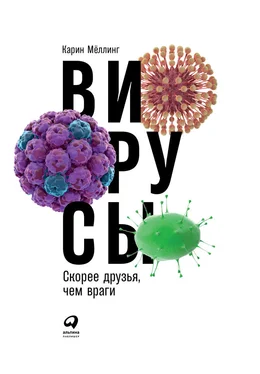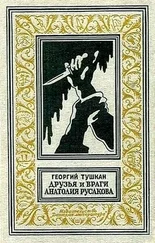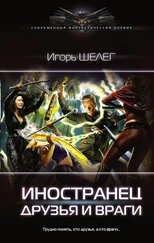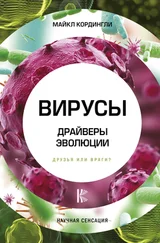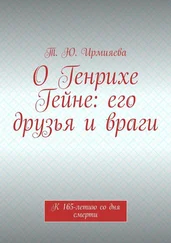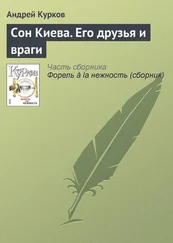Retrophage: Liu, M. et al., Bordetella bacteriophages encoding RT-mediated tropism-switching, J. Bacteriol. 2004; 186:1503.
Doulatov, S. et al., Tropism switching in Bordetella bacteriophage by diversity-generating retroelements, Nature 2004; 431:476.
Tobacco viruses: Buck, K.W., Replication of tobacco mosaic virus RNA, Philos. Trans. R. Soc. Lond. B. Biol. Sci. 1999; 354:613 .
Beijerinck, M.W., Contagum vivum fluidum of tobacco leaves, Phytopathol Classics No. 7, ed. Johnson, J., Am. Phyto. Soc., 1898.
Dreher, T.W., Viral tRNAs and tRNA-like structures, Rev. RNA 2010; 1:402.
Hammond, J.A. et al., 3D architectures of viral tRNA-like structures, RNA 2009; 15:294.
Apple tree: Mitrovic, J. et al., Sequences of Stolbur phytoplasma from DNA, Mol. Microbiol. Biotech. 2014; 24:1.
Georgiades, K. et al., Gene gain and loss events in Rickettsia and Orientia species, Biol. Direct 2011; 6:6.
Plants: Roossinck, M.J., Lifestyles of plant viruses, Philos. Trans. R. Soc. Lond. B. Biol. Sci. 2010; 365:1899.
Geminiviruses: Krupovic M. et al., Geminiviruses: A tale of a plasmid becoming a virus, BMC Evol. Biol. 2009; 9:112.
Tulipomania: Lesnaw, J.A. and Ghabrial, S.A., Tulip breaking: Past, present and future, Plant Disease 2000; 84:1052.
Murray, J.D., How the leopard gets its spots, Sci. Am. 1988; 3:80–87.
Глава 9
Interferon: McNab, F. et al., O’Garra, A., Type Interferons in infectious disease, Nat. Rev. Immunology 2015; 15:87–103.
siRNA: Baulcombe, D.C. and Dean, C., Epigenetic regulation in plant to the environment, CSH Pers.Biol. 2014; 6(9): a019471.
Wilson, R.C. and Doudna, J.A., Molecular mechanisms of RNA interference, Annu. Rev. Biophys. 2013; 42:217.
Moelling K., Matskevich A., and Jung J. S., Relationship between retroviral replication and RNA interference, CSH–SyQB2006; 71:365–8.
Matskevich, A. and Moelling, K., Dicer is involved in protection against influenza A virus infection, J. Gen. Virol. 2007; 88:2627–35.
Song J. J., et al., The crystal structure of the Argonaute2 PAZ domain reveals an RNA binding motif in RNA effector complexes, Nat. Struct. Biol. 2003; 10:1026–32.
Nowotny, M., Retroviral integrase superfamily: The structural perspective. EMBO Reports 2009; 19:144–151.
Nasir, A. and Caetano-Anolles, G., Origin of viruses and their impact on cellular evolution, Ann. N. Y. Acad. Sci. 2015; 1341:61.
Moelling, K. and Broecker, F., The RT-RNase H: From viruses to antiviral defense, Ann. N. Y. Acad. Sc i. 2015; 1341:126–35.
Orsay virus: Sterken, M.G. et al., A heritable antiviral RNAi response limits Orsay virus infection, PLoS One 2014; 9(2).
CRISPR/Cas9: Doudna, J.A. and Charpentier, E., Genome editing. The new frontier of genome engineering with CRISPR-Cas9, Science 2014; 346 (6213):1258096.
Jinek, M. et al., Structures of Cas9 endonucleases, Science 2014; 343, 1247997.
Hsu, P.D., Lander, E.S., and Zhang, F., Development and applications of CRISPRCas9 for genome engineering, Cell 2014; 157:1262.
Barrangou, R. and Marraffini, L.A., CRISPR-Cas systems: Procaryotes to adaptive immunity, Review Mol. Cell. 2014; 54:234.
Krupovic, M. et al., Casposons: Self-synthesizing DNA transposons of CRISPR-Cas immunity, BMC Biology 2014; 12:36.
Horvath, P. and Barrangou R., CRISPR/Cas9, the immune system of bacteria and archaea, Science 2010; 327:167.
Swarts, D.C. et al., DNA-guides DNA interference by a procaryotic Argonaute, Nature 2014; 507:258.
Moelling, K. et al., Silencing of HIV by hairpin-loop DNA oligonucleotide (siDNA), FEBS Letters2006; 580:3545.
Zhou, L. et al., Transposition of hAT elements links TE and V(D)J recombination, Nature 2004; 432:995 .
Bateman, A., Eddy, S.R., and Chothia, C., Members of the immunoglobulin superfamily in bacteria, Protein Sci.1996; 5:1939.
Beauregard, A., Curcio, M.J. and Belfort M., The take and give between TE, Annu. Rev. Genet. 2008; 42:587.
Antisense: Isselbacher, K.J., Retrospective: Paul C. Zamecnik (1912–2009), Science 2009; 326:1359.
Citron, M. and Schuster, H., The c4 repressors of bacteriophages P1 and P7 are antisense RNAs, Cell 1990; 62:591.
Глава 10
Reardon, S., Phage therapy gets revitalized, Nature 2014; 510:15.
Young, Ry. and Gill, J.J., Phage therapy redux – What is to be done? Science 2015; 350:1163.
Viertel, T.M., Ritter, K. and Horz, H.P., Phage therapy against MDR pathogens, J. Antimic. Chemother. 2014; 69:2326–36.
Phagoburn: EU program: The main objective of Phagoburn is to assess the safety, effectiveness and pharmacodynamics of two therapeutic phage cocktails to treat either E. coli or P. aeruginosa burn wound infections, 2013–2016.
Vanessa, K. et al., Gut microbiota from twins discordant for obesity, Science 2013; 341:1079.
Multiresistant bacteria: Nьbel, U., MRSA transmission on a neonatal intensive care unit, PLoS One. 2013;8(1): e54898.
Stower, H., Medical genetics: Narrowing down obesity genes, Nat. Med. 2014;20:349.
Lepage, P. et al., Dore, A., Metagenomic insight into our gut`s microbiome, Gut 2013; 62:146.
Smemo, S., Obesity-associated variants within FTO and with IRX3, Nature 2014; 507:371.
Blaser, M. and Bork, P. et al., The microbiome explored: Recent insights and future challenges, Nat. Rev. Microbiol. 2013;11:213.
Transgenerational epigenetics: Tobie, E.W. et al., DNA methylation to prenatal famine, Hu. Mol. Gen. 2009; 18;2:4046.
Bygren, L.O. et al., Grandmothers’ early food supply influenced mortality of female grandchildren, BMC Genet. 2014; 15:12.
Norman, J.M. et al. Alterations in the enteric virome in inflammatory bowel disease, Cell 2015;160: 447.
Grossniklaus, U. et al., Transgenerational epigenetic inheritance: How important is it?, Nat. Rev. Genet.2013; 14:228.
Pembrey, M.E. et al., Sex-specific, male-line transgenerational responses in humans, Eur. J. Hum. Genet. 2006; 14:159.
Arabidopsis Genome Initiative, Analysis of the genome sequence of Arabidopsis thaliana, Nature 2006; 441:469.
Waterland, R.A. and Jirtle, R.L., TE targets for early nutritional effects on epigenetic gene regulation. MCB2003; 23:5293.
Slotkin, R.K. and Martienssen, R., TE and the epigenetic regulation of the genome, Nat. Rev. Genet. 2007; 8:2.
Pfeifer, A. et al., Verma, I.M., Lentiviral vectors: Lack of gene silencing in embryos, PNAS2002; 99:2140.
Dutch famine: Lumey, L.H. et al., The Dutch hunger winter families study, Int. J. Epidemiol. 2007; 36:1196.
Roseboom, T., de Rooij, S. and Painter, R., The Dutch famine and consequences for adult health, EarlyHum. Dev. 2006; 82:485.
Cao-Lei, L. et al., DNA methylation triggered by prenatal stress exposure to ice storm, PLoS One 2014; 9:9(e107653).
Ost, A. et al., Paternal diet defines offspring chromatin state and intergenerational obesity, Cell 2014; 159:1352.
Phage therapy: Vandenheuvel, D., Lavigen, R. and Brьssow, H., Bacteriophage therapy, Annu. Rev.Virol. 2015; 2:599.
Gut-brain axis: Bercik, P. et al., Intestinal microbiota affect BDNF, Gastroenterology 2011; 141:599.
Obesity gene counts: Le Chatelier et al., Richness of human gut microbiome and metabolic markers, Nature 2013;500:541.
Gut microbiota: Qin, J. et al., Wang, J., A metagenome-wide study of gut microbiota in diabetes, Nature 2012; 490:55.
Cotillard, A. et al., Ehrlich, S.D., Dietary intervention impact on gut microbial gene richness, Nature 2013; 500:585.
Ackerman, D. and Gems, D., The mystery of C. elegans aging: An emerging role for fat, Bioessays 2012; 34:466.
Fecal transfer: Broecker F., Rogler, G., and Moelling, K., Intestinal microbiome of C. diff. with FT, Digestion 2013;88:243.
Reyes, A. et al., Viruses in the faecal microbiota of monozygotic twins and their mothers, Nature 2010; 466:344.
Читать дальше
Конец ознакомительного отрывка
Купить книгу
